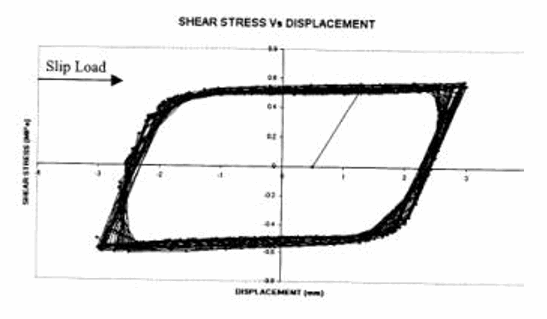D.Sutcliffe1 and A.W.Page2
ABSTRACT
Loadbearing masonry construction with suspended concrete floor slabs is common throughout Australia, especially for low to medium rise (3–5 storey) apartment buildings. In order to accommodate any long term differential movement (eg. thermal movement, concrete shrinkage, brick growth) it is usual Australian building practice to include a slip joint to between the underside of the concrete slabs and the top of any loadbearing masonry walls. However, as well as allowing long term relative movement slip joints must also be capable of transmitting short term transient loads as a result of earthquakes and/or wind.
Conventional shear wall analysis relies on elastic theory to determine the distribution of total lateral load to individual shear walls. The inclusion of slip joints creates an elastic– plastic response whereby the shear load distributed to each wall will be determined not by the wall’s elastic stiffness but by the capacity of the joint. As lateral load levels increase, individual walls will progressively slip as their shear (slip) capacity is reached, resulting in a redistribution of forces in the shear wall system. Traditional elastic theory is incapable of of predicting the redistribution of load in the shear wall system and so may not give a true indication of the peak shear load in each wall as a result of progressive redistribution of load.
This paper presents a preliminary, conceptual analysis of the effect the inclusion of slip joints has on the distribution of shear in some typical loadbearing masonry buildings. The effect is studied using a finite element analysis of symmetrical and unsymmetrical wall layouts for an idealised loadbearing structure with and without slip joints. It is shown that the influence of the slip joint is indeed significant, and must be considered if realistic wall racking loads are to be predicted.
Key words: Loadbearing masonry, Slip joints, Shear wall response.
LBWALL04



